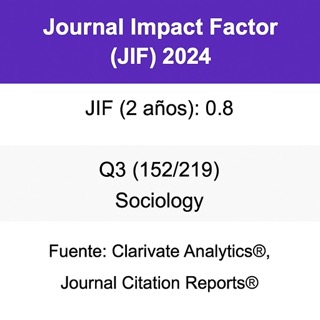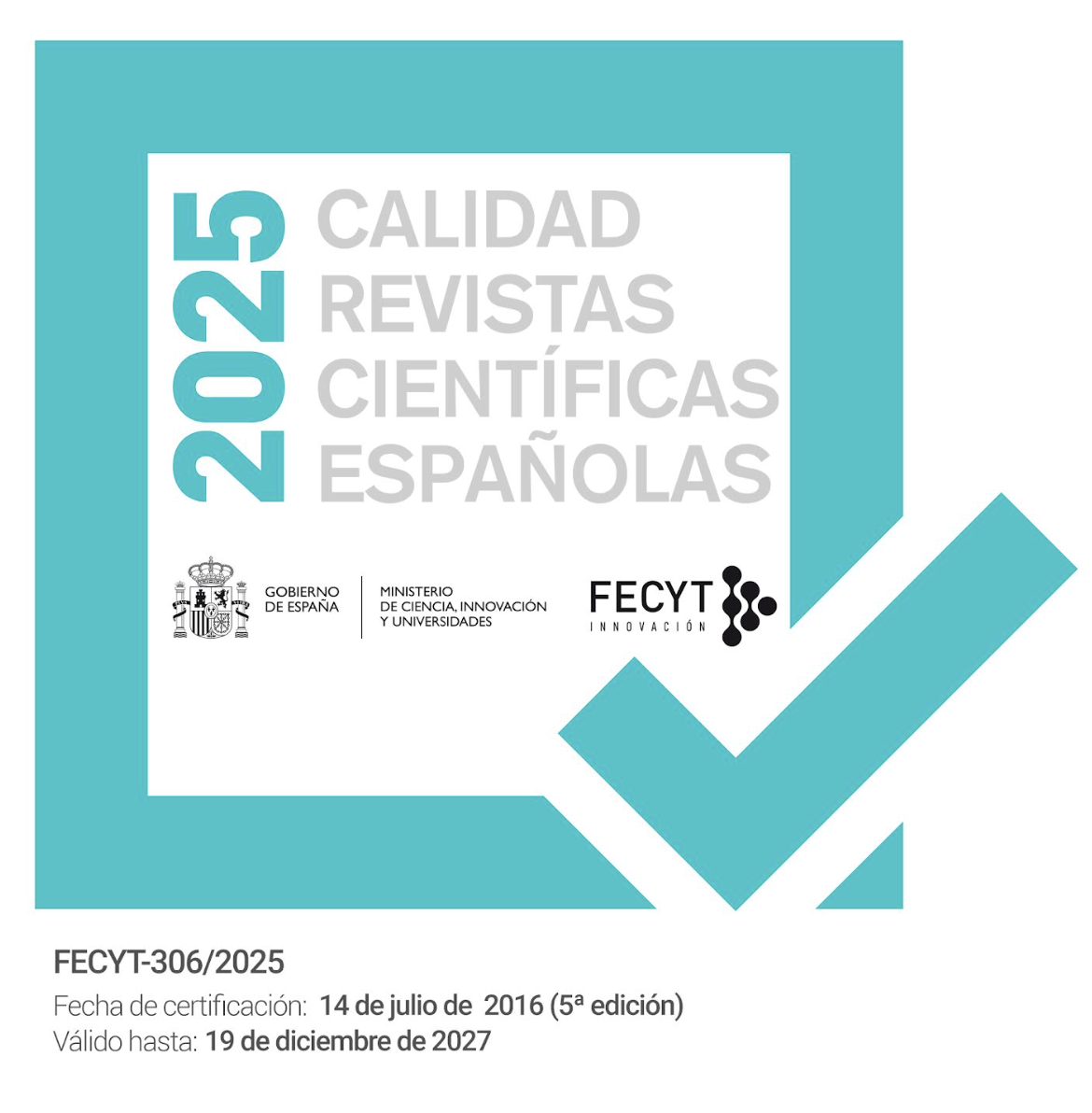Incertidumbres algorítmicas en torno a las violencias de género. El caso del sistema VioGén y otros sistemas de predicción del riesgo
DOI:
https://doi.org/10.22325/fes/res.2024.225Palabras clave:
algorithms, discrimination, risk assessment, intimate partner femicide, Decision Supported Systems (DSS), false negativeResumen
En la sociedad actual los algoritmos juegan un papel destacado en la toma de decisiones, desde la búsqueda de información hasta la estimación de conductas delictivas. Los sistemas algorítmicos de evaluación del riesgo se han convertido en una herramienta clave para la prevención y la protección de las víctimas de violencia de género. Este artículo analiza las principales bondades y críticas de los sistemas algorítmicos de evaluación del riesgo, con especial énfasis en el caso de la violencia de género. En la primera parte se identifican las principales ventajas y limitaciones de estos sistemas, según sus defensores y detractores. En la segunda parte se revisan los más importantes modelos y programas vigentes en numerosos países occidentales, así como los distintos sistemas de evaluación del riesgo de violencia de género presentes en España, con especial detenimiento en el sistema VioGén. En la tercera parte, se discuten propuestas éticas y sociales que surgen en torno a estos sistemas.
Citas
Álvarez Freijo, M., Andrés-Pueyo, A., Augé Gomà, M., Choy Vilana, A., Fernández Velasco, R., Fernández Rodríguez, C., Foulon, H., López Ferré, S., Martínez-Izquierdo, M.T., Martínez Bueno, C., Saiz-Lloret, M., y Serratusell Salvadó, L. (2011). Protocolo de valoración del riesgo de violencia contra la mujer por parte de su pareja o ex pareja (RVD-BCN). Circuito Barcelona contra la Violencia hacia las Mujeres. https://bcnroc.ajuntament.barcelona.cat/jspui/bitstream/11703/91573/1/10964.pdf
Angwin, J., Larson, J., Mattu, S. y Kirchner, L. (2016, 23 de mayo) Machine bias. ProPublica. https://www.propublica.org/article/machine-bias-risk-assessments-in-criminal-sentencing
Ashford, L. J., Spivak, B. L., y Shepherd, S. M. (2022). Racial fairness in violence risk instruments: a review of the literature. Psychology, Crime & Law, 28(9), 911-941. https://doi.org/10.1080/1068316X.2021.1972108
Barabas C., Dinakar K., Ito, J., Virza, M. y Zittrain J. (2017). Interventions over predictions: Reframing the ethical debate for actuarial risk assessment. Cornell University. https://doi.org/10.48550/arXiv.1712.08238
Berk, R. A., Kuchibhotla, A. K. y Tchetgen Tchetgen, E. (2023). Fair Risk Algorithms. Annual Review of Statistics and Its Application, 10, 165-187. https://doi.org/10.1146/annurev-statistics-033021-120649
Berk, R.A., Heidari, H., Jabbari, S., Kearns, M. y Roth, A. (2021). Fairness in criminal justice risk assessments: The state of the art. Sociological Methods & Research, 50(1), 3-44. https://doi.org/10.1177/0049124118782533
Berk, R.A. (2012). Criminal justice forecasts of risk: A machine learning approach. Springer Science & Business Media.
Bodelón González, E., Barcons Campmajó, M., Ortiz Amaro, L., Murillo Blasco, E., Pisonero Francisco, A. y González Pardo, P. (2019, diciembre). Órdenes de protección y derechos de las mujeres que han sufrido violencia de género: obstáculos para una efectiva protección. El Institut Català de les Dones (ICD). https://dones.gencat.cat/web/.content/03_ambits/docs/cdoc_publicacions_ordenes_proteccion.pdf
Buolamwini, J. y Gebru, T. (2018). Gender shades: Intersectional accuracy disparities in commercial gender classification. Proceedings of Machine Learning Research, 81, 1-15. http://proceedings.mlr.press/v81/buolamwini18a.html
Campbell, J. C., O’Sullivan, C., Rohel, J. y Webster, D. (2005). Intimate Partner Violence Risk Assessment Validation Study. Final Report. National Institute of Justice (NIJ). https://www.ojp.gov/ncjrs/virtual-library/abstracts/intimate-partner-violence-risk-assessment-validation-study-final
Campbell, J. C., Webster, D. W. y Glass, N. (2009). The danger assessment: Validation of a lethality risk assessment instrument for intimate partner femicide, Journal of Interpersonal Violence 24(4), 653-674. https://doi.org/10.1177/0886260508317180
Europa Press (2022, febrero 5). La comisaria de Viogén sobre las pulseras: "Las pondría a todas con riesgo de homicidio" [Entrevista]. https://www.europapress.es/videos/video-comisaria-viogen-pulseras-pondria-todas-riesgo-homicidio-20230205132136.html
Chalkley, R. y Strang, H. (2017). Predicting domestic homicides and serious violence in Dorset: A replication of Thornton’s Thames Valley analysis. Cambridge Journal of Evidence-Based Policing, 1(2), 81-92. https://doi.org/10.1007/s41887-017-0010-2
Copas, J. y Marshall, P. (1998). The offender group reconviction scale: A statistical reconviction score for use by probation officers, Journal of the Royal Statistical Society. Series C (Applied Statistics), 47(1), 159–171. https://doi.org/10.1111/1467-9876.00104.
Davies, H., McKernan, B. y Sabbagh, D. (2023, 9 de diciembre). 'El Evangelio': cómo utiliza Israel la inteligencia artificial para seleccionar objetivos en Gaza. The Guardian/El diario.es [traducción de Francisco de Zárate]. https://www.eldiario.es/internacional/theguardian/evangelio-utiliza-israel-inteligencia-artificial-seleccionar-objetivos-gaza_1_10740704.html
Dawes, R. M., Faust, D. y Meehl, P. E. (1989). Clinical versus actuarial judgment. Science, 243(4899), 1668-1674. https://doi.org/10.1126/science.2648573
De la Poza, E., Jódar, L. y Barreda, S. (2016). Mathematical modeling of hidden intimate partner violence in Spain: A quantitative and qualitative approach. Abstract and Applied Analysis. https://doi.org/10.1155/2016/8372493
Delgadillo-Alemán, S., Ku-Carrillo, R., Pérez-Amezcua, B. y Chen-Charpentier, B. (2019). A mathematical model for intimate partner violence. Mathematical and Computational Applications, 24(1), 29. https://doi.org/10.3390/mca24010029
Desmarais, S., Garrett, B. y Rudin, C. (2019). Risk assessment tools are not a failed ’minority report’. Law360. https://www.law360.com/access-to-justice/articles/1180373/risk-assessment-tools-are-not-a-failed-minority-report-
Dutton, D. G. y Kropp, P. R. (2000). A review of domestic violence risk instruments. Trauma, Violence & Abuse, 1(2), 171-181. https://doi.org/10.1177/1524838000001002004
Echeburúa, E., Amor, P. J., Loinaz, I. y De Corral, P. (2010). Escala de Predicción del Riesgo de Violencia Grave contra la pareja-Revisada-(EPV-R). Psicothema, 22(4), 1054-1060. http://www.redalyc.org/articulo.oa?id=72715515077
Echeburúa, E., Fernández-Montalvo, J., Corral, P. y López-Goñi, J.J. (2009). Assessing risk markers in intimate partner femicide and severe violence. A new assessment instrument. Journal of Interpersonal Violence, 24(6), 925-939. https://doi.org/10.1177/0886260508319370
Englezos, E. (2023). Policing by algorithm: NSW Police’s Suspect Target Management Plan. Alternative Law Journal, 48(1), 17-24. https://doi.org/10.1177/1037969X221147745
Ericson, R. V. (1997[1948]). Policing the risk society. University of Toronto Press. http://search.ebscohost.com/login.aspx?direct=truescope= sitedb=e000xnaAN=683064
Eticas (2022). The external audit of the VioGén system. Association Eticas Research and Innovation https://eticasfoundation.org/wp-content/uploads/2022/04/ETICAS-_-Auditori%CC%81a-Externa-del-sistema-VioGe%CC%81n-_-20220308.docx.pdf
Eubanks, V. (2018). Automating inequality: How high-tech tools profile, police, and punish the poor. St. Martin's Press.
European Institute for Gender Equality (EIGE) (2019). Risk assessment and management of intimate partner violence in the EU. Publications Office of the European Union. https://doi.org/10.2839/37233
Farrington, D. P. y Tarling, R. (1985). Criminological prediction: An introduction. En D.P. Farrington y R. Tarling (Eds.), Prediction in criminology (pp. 2-33). SUNY Press.
Fernández Teruelo, J. G., Fernández-Rivera González, P. y García Amez, Javier (Dir.) (2022). Nuevas formas de prevención y respuesta jurídico-social frente a la violencia de género. Thomson Reuters Aranzadi.
Fiscalía General del Estado (2019). Memoria de la Fiscalía General del Estado, 2018. https://www.fiscal.es/memorias/memoria2019/FISCALIA_SITE/index.html
Flores, A. W., Bechtel, K., y Lowenkamp, C. T. (2016). False positives, false negatives, and false analyses: A rejoinder to machine bias: There's software used across the country to predict future criminals and it's biased against blacks. Federal Probation Journal, 80(2), 38-46. https://www.uscourts.gov/sites/default/files/80_2_6_0.pdf
García Martín, J., y Rubio, E. (2023, 7 de diciembre). Repunte de asesinatos machistas - Se revisarán los criterios para dar de baja un caso en VioGén [Reportaje]. https://www.rtve.es/v/7030197/?t=55s
González-Prieto, Á., Brú, A., Nuño, J. C. y González-Álvarez, J. L. (2021). Machine learning for risk assessment in gender-based crime. Computers and Society, arXiv preprint arXiv, 2106.11847. https://doi.org/10.48550/arXiv.2106.11847
Gottfredson, S. D. y Moriarty, L. J. (2006). Statistical risk assessment: Old problems and new applications. Crime & Delinquency, 52(1), 178-200. https://doi.org/10.1177/0011128705281748
Graham, L. M., Sahay, K. M., Rizo, C. F., Messing, J. T. y Macy, R. J. (2021). The Validity and Reliability of Available Intimate Partner Homicide and Reassault Risk Assessment Tools: A Systematic Review. Trauma, Violence, & Abuse, 22(1), 18-40. https://doi.org/10.1177/1524838018821952
Grogger, J., Gupta, S., Ivandic, R. y Kirchmaier, T. (2021). Comparing Conventional and Machine‐Learning Approaches to Risk Assessment in Domestic Abuse Cases. Journal of Empirical Legal Studies, 18(1), 90-130. https://www.nber.org/system/files/working_papers/w28293/w28293.pdf
Grove, W. M. y Meehl, P. E. (1996). Comparative efficiency of informal (subjective, impressionistic) and formal (mechanical, algorithmic) prediction procedures: The clinical–statistical controversy. Psychology, Public Policy, and Law, 2(2), 293-323. https://doi.org/10.1037/1076-8971.2.2.293
Hannah-Moffat, K. (2019). Algorithmic risk governance: Big data analytics, race and information activism in criminal justice debates. Theoretical Criminology, 23(4), 453-470. https://doi.org/10.1177/1362480618763582
Harcourt, B.E. (2015). Risk as a proxy for race: The dangers of risk assessment. Federal Sentencing Reporter, 27(4), 237–243. https://doi.org/10.1525/fsr.2015.27.4.237
Harcourt, B.E. (2006). Against prediction: Profiling, policing and punishing in an actuarial age. University of Chicago Press.
Hassein, N. (2017, 15 de agosto). Against Black Inclusion in Facial Recognition. Digital Talking Drum. https://digitaltalkingdrum.com/2017/08/15/against-black-inclusion-in-facial-recognition/
Her Majesty’s Inspectorate of Constabulary (2014). Everyone’s business: Improving the police response to domestic abuse. Home Secretary Inspectorate of Constabulary (HMIC). https://www.scie-socialcareonline.org.uk/everyones-business-improving-the-police-response-to-domestic-abuse/r/ a11G0000 003FG 3FIAW
Jiménez, A., y Douhaibi, A. (2023). The Islamophobic consensus: Datafying racism in Catalonia. En Z. Bednarz, y M. Zalnieriute (Eds.), Money, Power, and AI: Automated Banks and Automated States (pp. 152-170). Cambridge University Press. https://doi.org/10.1017/9781009334297.012
Kahneman, D., Rosenfield, A. M., Gandhi, L. y Blaser, T. (2016). Noise: How to overcome the high, hidden cost of inconsistent decision making. Harvard Business Review, 94(10), 38-46. https://hbr.org/2016/10/noise
Kleinberg, J., Mullainathan, S. y Raghavan, M. (2017). Inherent trade-offs in the fair determination of risk scores. En Proceedings of the 8th Conference on Innovations in Theoretical Computer Science.
Kropp, P R. (2004). Some questions regarding spousal assault risk assessment. Violence against women, 10(6), 676-697. https://doi.org/10.1177/1077801204265019
Larson, J., Mattu, S., Kirchner, L. y Angwin, J. (2016, 23 de mayo). How We Analyzed the COMPAS Recidivism Algorithm. ProPublica. https://www.propublica.org/article/how-we-analyzed-the-compas-recidivism-algorithm
Lin, J., y Chen, C. (2023). The epistemic ethical concerns involving algorithms in intelligent communication. Teknokultura. Revista de Cultura Digital y Movimientos Sociales, 20(Special Issue), 27-36. https://doi.org/10.5209/tekn.87552
Lo, P. (2022). From data criminalization to prison abolition. Community Justice Exchange Project. https://abolishdatacrim.org/en
López-Flores, L. M. (2022). Colonialidad algorítmica: Racialización y sexualización mecanizada en el capitalismo digital: Una perspectiva de género. Teknokultura. Revista de Cultura Digital y Movimientos Sociales, 19(2), 113-122. https://doi.org/10.5209/TEKN.78681
López-Ossorio, J. J., González-Álvarez, J. L., Loinaz, I., Martínez-Martínez, A. y Pineda, D. (2021). Intimate partner homicide risk assessment by police in Spain: The Dual Protocol VPR5.0-H. Psychosocial Intervention, 30(1), 47-55. http://dx.doi.org/10.5093/pi2020a16
López-Ossorio, J. J., González-Álvarez, J. L., Muñoz Vicente, J. M., Urruela Cortés, C. y Andrés-Pueyo, A. (2019). Validation and calibration of the Spanish police intimate partner violence risk assessment system (VioGén). Journal of police and criminal psychology, 34, 439-449. https://doi.org/10.1007/s11896-019-09322-9
López-Ossorio, J. J., González-Álvarez, J. L. y Andrés-Pueyo, A. (2016). Predictive effectiveness of the police risk assessment in intimate partner violence. Psychosocial Intervention, 25(1), 1-7. https://doi.org/10.1016/j.psi.2015.10.002
McNamara, D., Graham, T., Broad, E. y Ong, C. S. (2019). Trade-offs in algorithmic risk assessment: An Australian domestic violence case study. En A. Daly, K. Devitt y M. Mann (Eds.) Good data (pp. 96-116). Institute of Network Cultures.
Messing, J. Th. y Thaller, J. (2013). The average predictive validity of intimate partner violence risk assessment instruments. Journal of Interpersonal Violence, 28(7), 1537-1558. https://doi.org/10.1177/0886260512468250
Ministerio del Interior (2022, 28 de julio). VioGén cumple 15 años con más 700.000 casos analizados y 5,4 millones de valoraciones de riesgo realizadas. https://n9.cl/wm98b
Ministerio del Interior (2019). Guía de procedimiento VPR5.0 y VPER4.1. Protocolo de valoración policial del riesgo y gestión de la seguridad de las víctimas de violencia de género. https://violenciadegenerotic.files.wordpress.com/2019/05/instruccion-4-2019.pdf
Mitchell, S., Potash E., Barocas S., D’Amour A, Lum. K. (2021). Algorithmic Fairness: Choices, Assumptions, and Definitions. Annual Review of Statistics and Its Applications, 8, 141-163. https://doi.org/10.1146/annurev-statistics-042720-125902
Muñoz-Vicente, J. M. M. y López-Ossorio, J. J. (2016). Valoración psicológica del riesgo de violencia: alcance y limitaciones para su uso en el contexto forense. Anuario de Psicología Jurídica, 26(1), 130-140. https://doi.org/10.1016/j.apj.2016.04.005
Noble, S. (2018). Algorithms of oppression: How search engines reinforce racism. New York University Press.
Northpointe (2015). A Practitioner's Guide to COMPAS Core. Northpointe. https://assets.documentcloud.org/documents/2840784/Practitioner-s-Guide-to-COMPAS-Core.pdf
Olaciregui, M. de la P. (2021). Prevenir la violencia contra las mujeres: análisis de las herramientas de evaluación y gestión del riesgo desde una perspectiva de género [Tesis doctoral]. Universidad de Zaragoza. https://zaguan.unizar.es/record/109559
Pasquale, F. (2015). The black box society: The secret algorithms that control money and information. Harvard University Press.
Pineda, D., Rico-Bordera, P., Galán, M., Piqueras, J. A., and González-Álvarez, J. L. (2023). Women Victims of Intimate Partner Violence and Intimate Partner Homicide: A Typology Based on Victimization Variables. Psychosocial Intervention, 32(1), 43-53. https://doi.org/10.5093/pi2023a3
Pueyo, A. A. y Redondo, S. (2007). Predicción de la violencia: Entre la peligrosidad y la valoración del riesgo de violencia. Papeles del Psicólogo, 28(3), 157-173. https://www.papelesdelpsicologo.es/pdf/1500.pdf
Ramos-Torre, R., y Callejo-Gallego, J. (2018). “Semántica social del riesgo: una aproximación cualitativa”, Política y Sociedad, 55(1), 235-256. https:// doi.org/10.5209/POSO.54062
Richards, L. (2009). Domestic Abuse, Stalking and Harassment and Honour Based Violence (DASH, 2009) Risk Identification and Assessment and Management Model. Association of Police Officers (ACPO). https://reducingtherisk.org.uk/wp-content/uploads/2022/08/DASH-2009.pdf
Robinson, A. L., Myhill, A., Wire, J., Roberts, J. y Tilley, N. (2016). Risk-led policing of domestic abuse and the DASH risk model. Cardiff University, College of Policing y UCL Department of Security and Crime Science. https://library.college.police.uk/docs/college-of-policing/Risk-led-policing-2-2016.pdf
Rodríguez-Rodríguez, I., Rodríguez, J. V., Pardo-Quiles, D. J., Heras-González, P. y Chatzigiannakis, I. (2020). Modeling and forecasting gender-based violence through machine learning techniques. Applied Sciences, 10(22), 8244. https://www.mdpi.com/2076-3417/10/22/8244/htm
Santos-Hermoso, J., González-Álvarez, J.L., Alcázar-Córcoles, M.Á. y Carbonell-Vayá, E. J. (2022). Intimate Partner Homicide Against Women Typology: Risk Factor Interaction in Spain. European Journal on Criminal Policy and Research. https://doi.org/10.1007/s10610-022-09517-7
Simón-Castellano, P. (2021). Inteligencia artificial y Administración de Justicia: ¿Quo vadis, justitia? IDP. Revista de Internet, Derecho y Política, 33. https://doi.org/10.7238/idp.v0i33.373817
Skeem, J. y Lowenkamp, C. (2020). Using algorithms to address trade‐offs inherent in predicting recidivism. Behavioral Sciences & the Law, 38(3), 259-278. https://doi.org/10.1002/bsl.2465
Soler, S. (2023, 7 de diciembre). Interior revisará los criterios que descartan a las mujeres del sistema de protección de violencia de género. https://www.rtve.es/noticias/20231207/interior-igualdad-reunion-violencia-genero/2465163.shtml
Taylor, K.-Y. (2019). Predatory inclusion. N+1, 35. https://nplusonemag.com/issue-35/essays/predatory-inclusion/
Thornton, S. (2017). Police attempts to predict domestic murder and serious assaults: Is early warning possible yet? Cambridge Journal of Evidence-Based Policing, 1(2), 64-80. https://doi.org/10.1007/s41887-017-0011-1
van Der Put, C. E., Gubbels, J., y Assink, M. (2019). Predicting domestic violence: A meta-analysis on the predictive validity of risk assessment tools. Aggression and Violent Behavior, 47, 100-116. https://doi.org/10.1016/j.avb.2019.03.008
Vignola-Lévesque, C. y Léveillée, S. (2022). Intimate Partner Violence and Intimate Partner Homicide: Development of a Typology Based on Psychosocial Characteristics. Journal of Interpersonal Violence, 37, 17-18, NP15874-NP15898. https://doi.org/10.1177/08862605211021989
Wang, C., Han, B., Patel, B., y Rudin, C. (2022). In pursuit of interpretable, fair and accurate machine learning for criminal recidivism prediction. Journal of Quantitative Criminology, https://doi.org/10.1007/s10940-022-09545-w
West, S.M., Whittaker, M., y Crawford, K. (2019). Discriminating systems: Gender, race, and power in AI (Informe técnico). AI Now Institute. https://ainowinstitute.org/discriminatingsystems.pdf
Zambrano-Guerrero, C. A., y Rodríguez-Pabón, D. M. (2021). Design thinking como herramienta para prevenir la violencia basada en género en estudiantes universitarios. Revista Guillermo de Ockham, 19(2), 293-306. https://doi.org/10.21500/22563202.5316
Završnik, A. (2021). Algorithmic justice: Algorithms and big data in criminal justice settings. European Journal of Criminology, 18(5), 623-642. https://doi.org/10.1177/1477370819876762
Zeng, J., Ustun, B., y Rudin, C. (2017). Interpretable classification models for recidivism prediction. Journal of the Royal Statistical Society: Series A (Statistics in Society), 180(3), 689-722. https://doi.org/10.1111/rssa.12227
Zweig, J. (2010). Extraordinary conditions of release under the bail reform act. Harvard Journal on Legislation, 47, 555–585. https://n9.cl/phutj
Publicado
Cómo citar
Número
Sección
Licencia
Derechos de autor 2024 Ángel Gordo López, María José Rubio Martín

Esta obra está bajo una licencia internacional Creative Commons Atribución-NoComercial 4.0.
Todas las publicaciones de la Revista Española de Sociología se realizarán bajo una licencia abierta Creative Commons de Reconocimiento 4.0 Internacional (CC BY 4.0). Dicha licencia establece que los autores son los poseedores de los derechos de propiedad intelectual de sus trabajos, que pueden redistribuirse a cambio de un reconocimiento adecuado. Para más información de la licencia Creative Commons, consultar aquí.
Una vez aceptado un artículo para su publicación, la Revista Española de Sociología solicitará al denominado "autor para la correspondencia" la aceptación de una licencia obligatoria Creative Commons incluida en un acuerdo o contrato de publicación.




